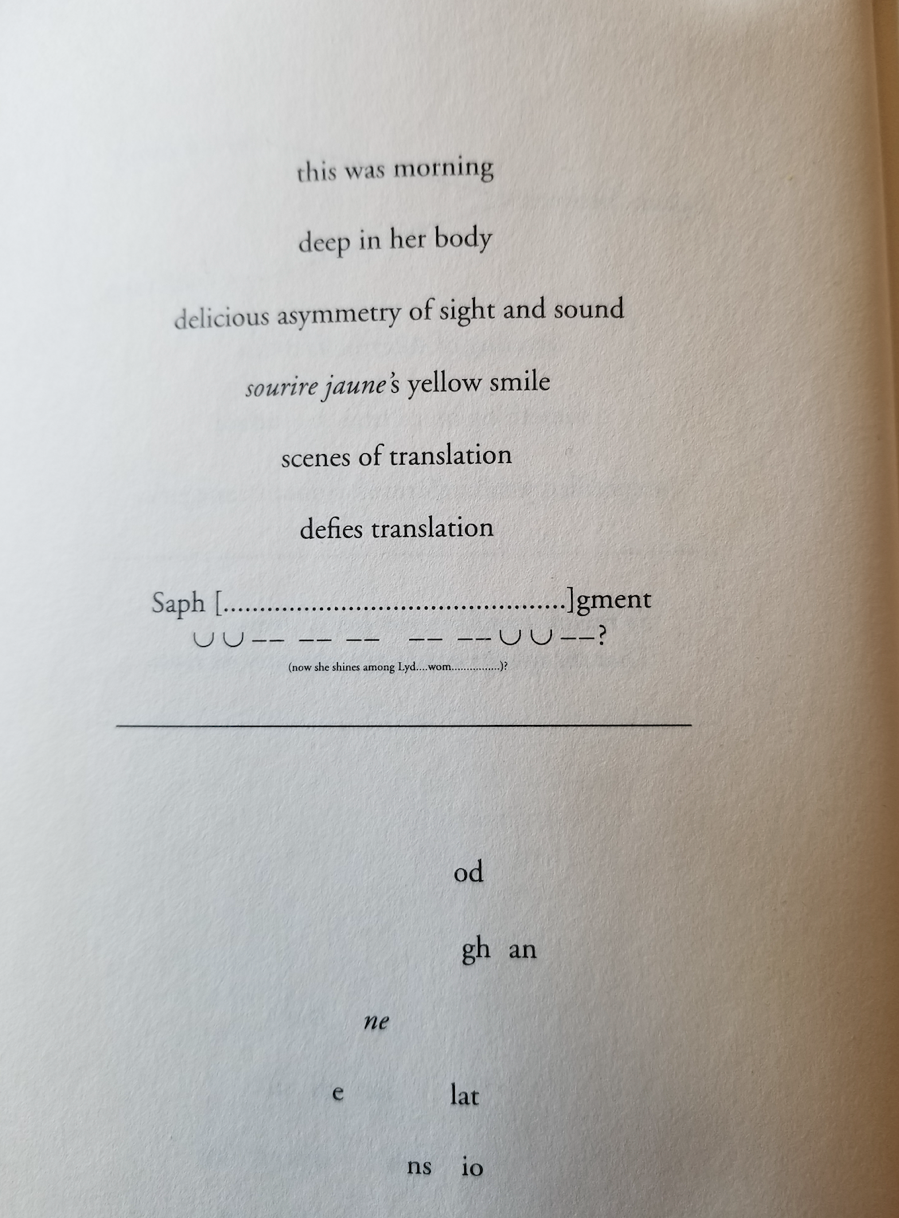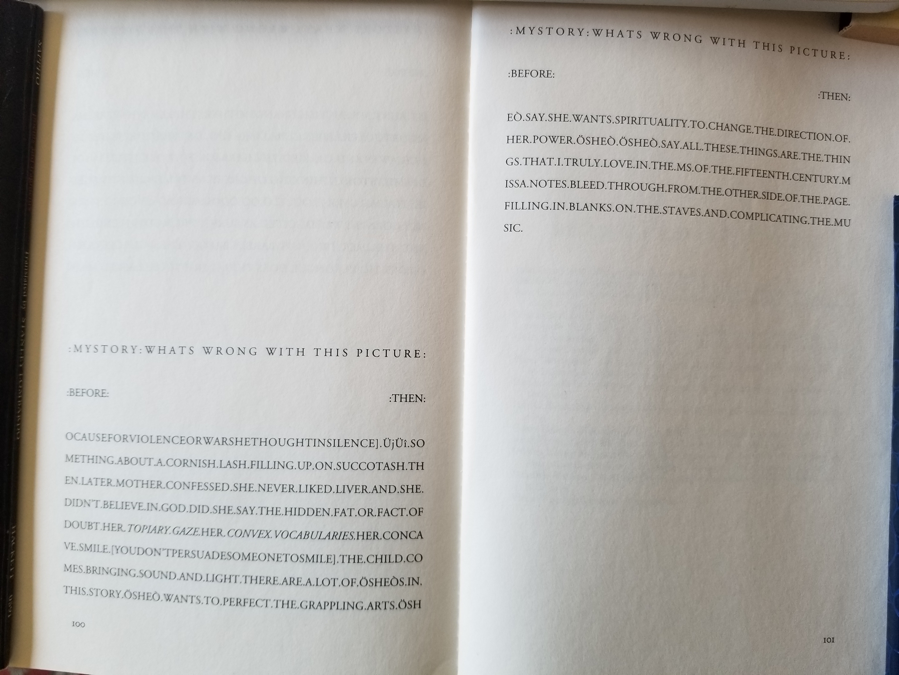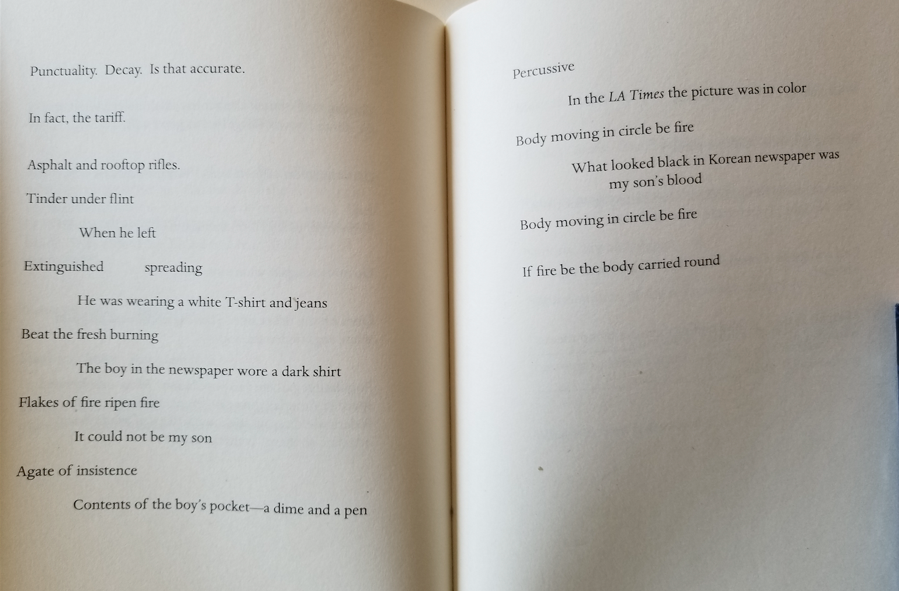
“Tradition” is what made it through war and the depredations of history. What was honored and carried through canon-makers like universities and governments. So traditions are by definition imperial tools meant to circumscribe expression. The pathless expressions of ecstasy, abandon, and dissolution are meant to be controlled.
Apollo, the slayer of Python, controller of prophecy, is the god of art and not Bacchus, sexed up and drunk, ready to tear his way through the towns, ready even to be himself torn up.
One reason why of Homer’s military epics we have thousands of pages but of Sappho’s anarchic tunes we earned only shreds. Both we had the care of.
Of course the epic, the story of the founding of empires, cannot survive time. Its ending—for my examples, the Iliad, the Odyssey, the Aeneid—always unravels. The makers of the modern movie Troy starring buff Brad Pitt could not resist: they added a final line to the truncated couplet which ends the written text of Homer. Following the (bastardized) line “Let them say, I lived in the time of Hector, tamer of horses,” Odysseus further intones, “Let them say, I lived in the time of Achilles,” not only completing the fragment, but also stealing the end of the epic from Hector, Homer’s true hero.
Sappho—who pronounced her own name Psappfo—survives in our contemporary imagination as poets for a different reason—the form of her work (fragments) resonates with a contemporary historical moment. In a talk given at the Poetry Society of America’s seminal symposium “What’s American About American Poetry?” Ann Lauterbach argued (convincingly) for a wholeness of the fragment—a lineage that one might trace from Pound, Apollinaire, and Reverdy through the first and second generations of the New York School to LANGUAGE poets and “post-language” (like Lauterbach herself).
Such a use of the fragment—examples here include Apollinaire’s “Zone” and Ted Berrigan’s excellent “sonnets”—were attempts at imitating modern and contemporary urban life, in this case Paris and New York respectively, with its concatenations and non-sequiturs of both time and space.
Lauterbach argued precisely against the fragment as “the lament for the lost whole…the historical narrative.” It’s possible though now, nearly 20 years after Lauterbach’s essay, that rather than the possibility of celebrating the broken, the fragment’s ability to evoke what is unsaid becomes once again important. Indeed the fragmentation of mental and physical space in the information era seems de facto and accepted. Time has either sped up to an infinite shift or it has frozen solid into timelessness. Sometimes things move so fast they appear to be standing still.
Stanley Lombardo was perhaps the first translator of Sappho after Mary Barnard to think of translating the fragments as fragments, as poetry themselves, “like any that might appear in a contemporary journal of poetry.” He also undertook a reordering of the fragments (indexed) to create what might be read as a collection of contemporary poetry. In his hands the resonance of the fragment as evocation can be appreciated fully.
One poem opens with a shred, continues with what appears to be a more or less complete stanza, and then ends once more with a shred. The effect is startling:
hurt
work
face honored
winter storm
Abanthis, take your lyre and sing
of Gongyla, while desire once again
flutters around
the beautiful girl: her dress
excited when you saw it,
and I am glad,
for the holy Cyprian herself
blamed me when I prayed
this word
I want
(Lombardo, fragment #60)
Whereas Barnard heightened the effect of the fragments as epigrammatic poetry but either not translating the really shredded lines and/or completing or filling in lines that veered into unintelligibility, Lombardo, like Anne Carson did later, translates everything he finds, even shredded sentences and single words. This scintilating effect of fragment-wholeness-fragment shares an architecture with many contemporary poems. One example might be Jean Valentine’s poem “Willi, Home,” which begins with a conflation between man and flower, moves from the external condition of the bedridden Willi’s illness, moves into the speaker’s interior and then drifts away into a chain of nouns and adjectives, quite literally enacting Willi’s inevitable fade to black (or, as it were, “Blue”).
In one famous fragment where Sappho discusses her mother’s memory of young girls wearing embroidered purple headbands which could only be obtained in a distant city, Barnard’s version ends with a line where Sappho states her own preference for a garland of flowers, while Lombardo continues to translate the ragged end of the fragment which discusses the provenance of the purple bands in the foreign city, since riven by war. The ragged nature of the document heightens the sense of what is lost by war and time:
But, Kleis, I don't know where to get
An embroidered headband for you,
The Mytilenean, though
To get
Embroidery
Reminders of
Exile of Cleanax’s sons
Dreadful loss
(Lombardo, fragment #47)
In this sense the fragment is both the classical evocation of the lost whole as well as complete and whole containing that meaning, as Lauterbach claims.
Contemporary poets use all three modes of fragment, sometimes all at once. First, the fragment can illicit a response or echo what is lost or missing. Secondly, fragments can respond to fractures of experience between an individual’s lived daily life and the way media creates experience at a distance. Finally, the individual lyric sometimes fractures because of the way perception itself has been impacted in the information era. So rarely does one “recollect in tranquility;” rather one is always already in the perceptual and linguistic moment in the eternal present perfect tense.
Let’s look briefly at a page from Joan Retallack’s poetic sequence “Afterrimages”—which has an extra ‘r,’ so it’s after “rimages” as well as of course holding the ghost of the “afterimage.” Each page is a diptych of sorts, with a fragmented poem above the line and then below the line, just a series of letters—never complete words—that are drawn from the above text. The letters below the line have the same spatial relationship as the letters above the line. One of the first problems is how one might pronounce it when read out loud. Unlike M. NourBese Philip’s Zong which one really does feel is a text for performance, it is possible that Afterrimages is meant as a reading experience, drawing more from the sense of spatial and visual than from the aural and performed. Nonetheless, let me try.
At the beginning of the piece we might have some sense of coherence offered by the epigrammatic or concise haiku structure of an assembly of images. Such a structure was also used by Apollinaire in “Zone.” But the poem veers into three following lines dealing with (or not dealing with) the issue of translation, also present in any effort to engage with classical fragments. (n this case you may already know that “sourire jaune” means “yellow smile.” What does ‘yellow’ smile mean? Well, in French it means a fake smile. In English you would probably think of an emoji, but Retallack’s book came out in 1995. So some books can talk to the future.
At any rate, a coherence devolves long before the poem moves below the line into pure utterance—or residue, depending on your point of view.
In her series “Autobiographialitteraria” (one word), Retallack uses a different physical form, also drawn from classical writing. In Greek that appeared in public places, the words ran into one another and were often separated only by a dot at the end of sentences. Retallack channels this as well as the Zen Buddhist style of chanting syllables individual from one another and with equal emphasis—also an echo of Sappho’s spondaic meters—to create a sense of discomfort in what is otherwise autobiographical writing.
Part of the ground of experience that Myung Mi Kim’s poems draw from is the belief that Global English is already a language riven by fragmentation—of history, language, geography, and experience. For Kim, who migrated to the US with her family when she was nine years old, English was a second and (relatively) late language. Her use and intentional misuse of it stems from a need to honor the qualities of the language as it was used by the communities in which she grew up. In a short and fragmented essay called “Pollen Fossil Record,” Kim asked:
What is English now, in the face of mass global migrations, ecological degradations, shifts and upheavals in identifications of gender and labor?... What are the implications of writing at this moment in precisely this “America?”
The title of Kim’s essay itself gives the three possible ways of looking at language as a whole—pollen that could drift and foment new growth, a fossil or dead remnant of something no longer extant but fixed in its deathless (and lifeless) instability, or ‘record,’ a word which could mean an archive of the past, but also, at least in the late 1960s when Kim was first learning English, referred to the grooved vinyl discs, which when played, gave music of the past into the present as sound.
In a brief excerpt from Kim’s “Thirty and Five Books,” in the aftermath of the LA Riots following the Rodney King verdict, which predominantly affected Korean communities in LA, a Korean mother speaks in fragments (“broken English?”) about seeing a picture of a boy in the newspaper who she thinks might be her son.
The fragmentation of speech and description is mirrored by the distortion of color in the picture depending on which newspaper one looked at. In the community newspaper the woman is led to believe that the boy is not her son. It isn’t until she sees the city-wide, more resource-rich paper that can print in color that she sees the truth of the situation and realizes it is indeed her son, wounded in the violence of the riots, that she had been looking at.
While Retallack and Kim are both poets writing in the experimental or innovative streams of contemporary American poetry, more traditional narrative and lyric poets are also contending with the fragment. Valentine probably did not intend her single words at the end of “Willi, Home” as ‘fragments,’ or if she did, she did in the Lauterbachian sense—fragments whole unto themselves as meaning-making images. Her “Home. Deep. Blue” turns us to the hyperaware and elemental experience of a sick or dying person and may represent a final death or liberation. At any rate, besides at such grand events as death, any lyric poet now must contend with the fragmentation of perception all ordinary and quotidian moments as well, such is the condition of the contemporary world.
Jennifer Grotz’s poem “Self Portrait on the Street of an Unnamed Foreign City,” begins with four lines of spatial and external description, each one distancing the surrounding from the speaker: a reflection in a shop window with Polish lettering, the description of two separate passersby, and then a one line description of the street. These four sparse lines are followed by the first line of subjective statement, “It is delicious to be anonymous on a foreign city street.”
Grotz’s speaker loves being “estranged,” both in geography and in language, and indeed the two feel closely related to her. Though the poem describes a typical narrative moment—that of walking down a street—as in O’Hara’s or Berrigan’s poems, the speaker herself is not fully described, other than mentioning having just turned 40. Even that generic detail offers more imaginative space for the reader rather than creating any sense of a detailed individual speaker. We are left with a more disembodied experience. The closing moments of the poem offer a surprising (and surprisingly pleasurable turn) one in which the very ordinary (the appearance of a Starbucks) and utilitarian (the speaker entering the chain coffee shop to avail herself of their free wifi) trumps the existential musing of the rest of the poem. This interruption of technology and immediacy completes the promised “self portrait,” which up until that point has been an unfocused portrait, full of “blurred” reflections and “unnamed” cities.
We don’t know what the fragments of the future will be. In an era of information overload will there be any “fragments” at all? Or, more likely to my mind, the use of the fragment in poetry will offer the poet a way to return to silence, return to pre-ubiquity, a chance to invite the unknown and return to the unknowable—original sources of poetry in the body and world.
___
Notes:
Grotz, Jennifer. “Self Portrait on the Street of an Unnamed City,” from Window Left Open, Graywolf Press, 2016.
Kim, Myung Mi. “Thirty and Five Books,” from Dura, Nightboat Books, 2008.
Kim, Myung Mi. “Pollen Fossil Record,” from Commons, University of California Press, 2002.
Lauterbach, Ann. “What’s American About American Form?”, Poetry Society of America, www.poetrysociety.org.
Lombardo, Stanley. Sappho: Poems and Fragments, Hackett Publishing, 2002.
Retallack, Joan. “Afterrimages,” and “Autobiographialitteraria II,” in Afterrimages, Wesleyan University Press, 1995.
Valentine, Jean. “Willi, Home,” from Home. Deep. Blue.: New and Selected Poems, Alice James Books, 1989.
Poet, editor, and prose writer Kazim Ali was born in the United Kingdom to Muslim parents of Indian ...
Read Full Biography




